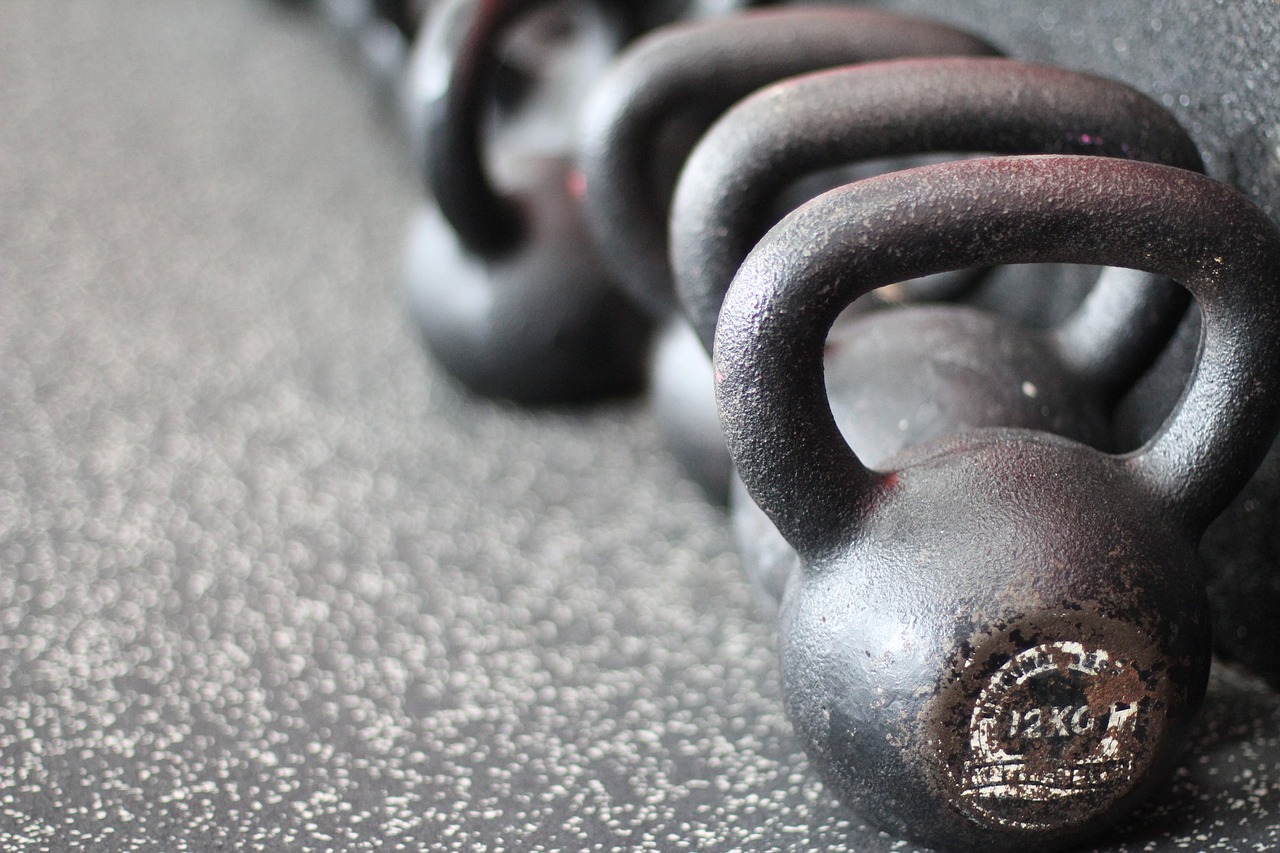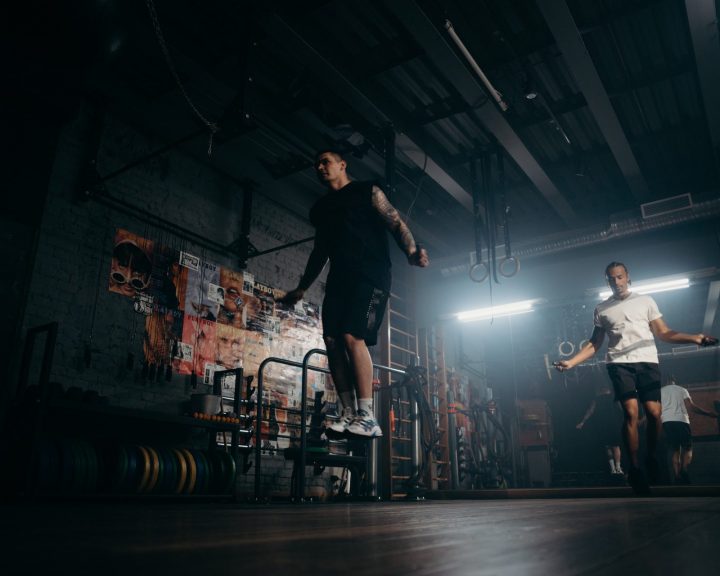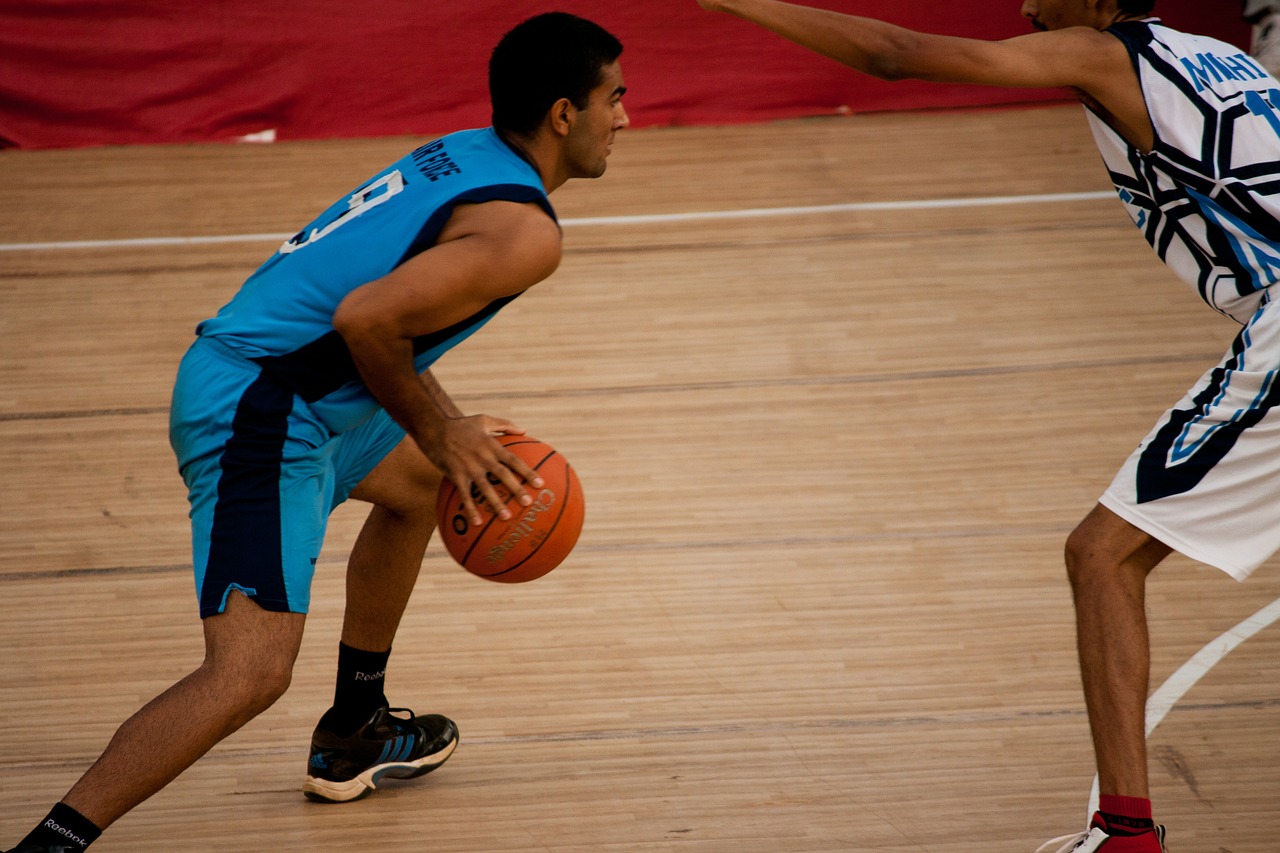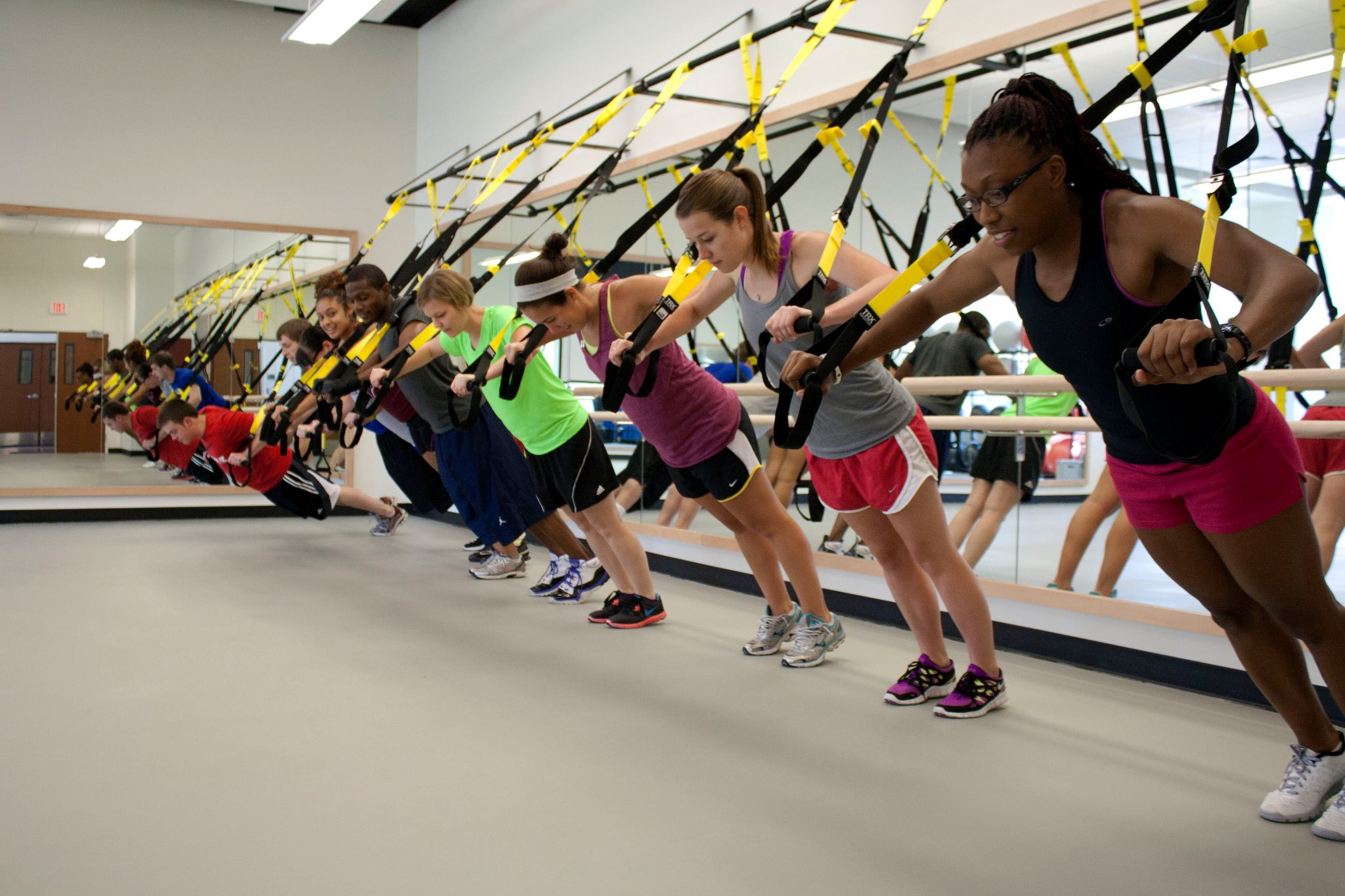Kettlebells provide an enormous amount of flexibility in terms of the exercises that you can do with them. Some of these exercises train balance, proprioception, mobility, strength, and endurance in really creative ways. Not only do exercises like this provide a great deal of benefit, they keep athletes challenged and engaged.
The kettlebell windmill is one such exercise. This exercise is performed with the kettlebell in one hand at a time. It works on mobility through the shoulders, thoracic spine, lower back, and hips. It also involves most of the muscles of the body in the upper extremity, core, glutes, and hamstrings.
To begin this exercise, stand up with the kettlebell held in your right hand at your shoulder. Press the kettlebell straight up until your right arm is extended. Without changing the direction of your body, pivot on your feet so that your feet make a 45 degree angle.
From this position, keeping your arm extended, push your hips to the right. As your hips are pushed out, lean your upper body to the left side until it is as close to parallel to the ground as you can get. While the body is leaning, the kettlebell needs to remain above the body (see photos below). Reverse directions and repeat for the desired number of repetitions.
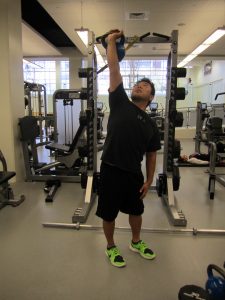
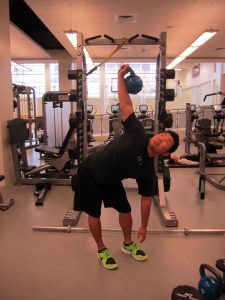
Cautions
Videos of people using a hundred pound kettlebell look great on social media, but I have some real reservations about going much heavier than 20-30 kilograms for this exercise and I think it would be best to begin in the 5-10 kilogram range. Here are the things that I feel that a strength and conditioning coach needs to be concerned with:
- This exercise takes a lot of concentration, technique, and should be done slowly enough to ensure control. So, for example, unlike a maximal back squat you are never going to headbutt the kettlebell, scream bloody murder, snatch it up, and grind the reps out.
- This is not a foundational exercise. Simply put it won’t give you the same kind of return that a squat, Romanian deadlift, or power clean will. But, it makes a great warm-up exercise, a cool down exercise, or an exercise to be done while one athlete is lifting and one is spotting during stations.
- This is not a good exercise to perform for periods of time, it lends itself to a low volume due to the first point above. This is different than, for example, the kettlebell swing which you might do in a metabolic conditioning workout for sets of 30-60 seconds.
Programming thoughts
Below are some thoughts on how to incorporate the kettlebell windmill exercise into a strength and conditioning programming:
- View it in one of three roles; warm-up exercise, cool down exercise, or as a station when three or more athletes are working in one area. For example, one squats, one spots, one does windmills, etc.
- Low volume for two to three sets. I like around five repetitions per set.
- Low intensity, this is not going to be a maximal strength exercise. Use it for the mobility and concentration benefits.
- Throw this in as a rotation of these types of exercises. For example:
- Weeks 1-4: kettlebell windmills
- Weeks 5-8: get ups
- Weeks 9-12: overhead squats

